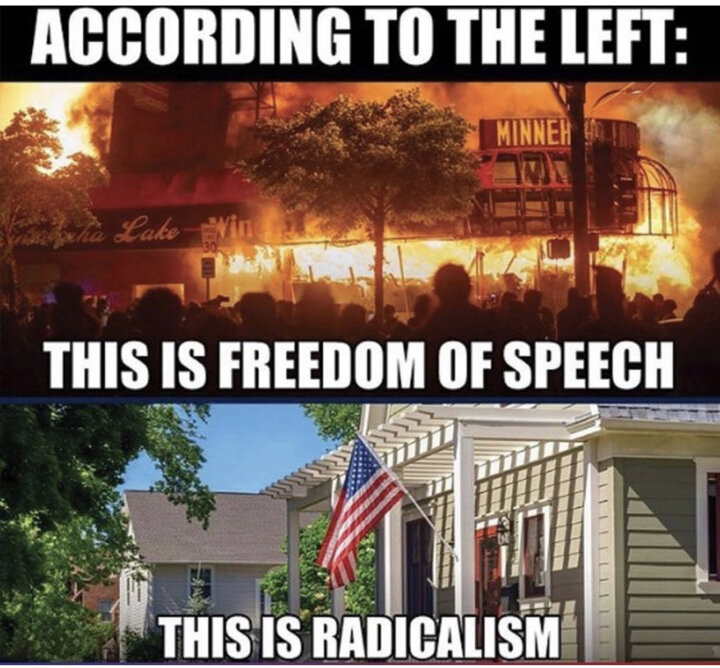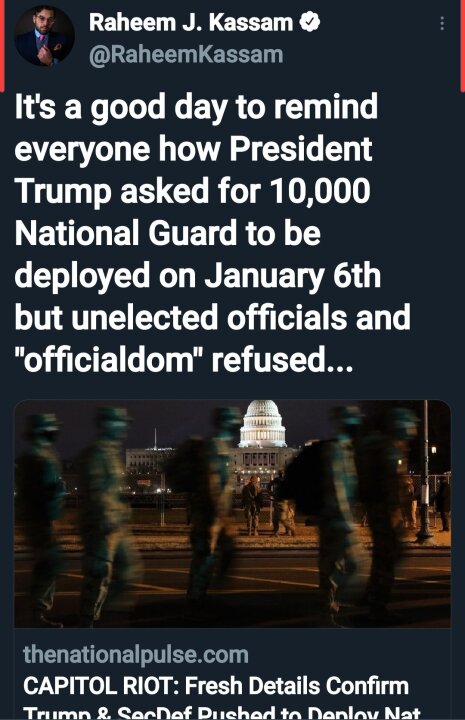Yup. (Military Times)
Hundreds of National Guard troops were posted in the streets of Washington, D.C., on Wednesday afternoon, but there was little they could do to respond as pro-Trump rioters overran the Capitol.
Investigations are imminent, to determine whether the Capitol Police were undermanned and unprepared for the threat posed by two days of rallies against the results of the 2020 election, but the answer as to why troops posted blocks away were unable to respond to the siege is as simple ― or as complicated ― as a morass of bureaucracy.
Simply put, the National Guard only shows up to D.C. when they’ve been invited, and the Capitol Police did not extend that invitation until after the breach, according to a source with knowledge of the process, who was not authorized to speak about it on the record.
The several hundred troops posted around downtown D.C. on Wednesday were there at the request of Mayor Muriel Bowser, to support local police.
“We had worked out that the support we were providing the [Metropolitan] Police Department would be on traffic control points,” the source said, including downtown subway stations and select blocks, where teams of two Guardsmen and several vehicles were keeping the streets clear of cars.
Bowser put in a request for support Dec. 31, Army Secretary Ryan McCarthy told reporters on Thursday.
The Defense Department was in contact with Capital Police ahead of Tuesday and Wednesday’s protests, Kenneth Rapuano, the assistant defense secretary for homeland defense, told reporters during a press call on Thursday. They asserted that they would not be requesting National Guard support, he said.
DCNG announced Monday it had mobilized 340 troops to support MPD, but that organization’s jurisdiction does not cover any federal land within the District, and so its officers ― and its Guard support ― could not have just rushed to the Capitol.
Further, once they got there, Guard troops who had been acting in a traffic control capacity, not as law enforcement, would not have been able or authorized to forcibly push back rioters or help clear the building, a task that fell to the Capitol Police and the FBI tactical forces they requested to help out.
So when chaos unfolded Wednesday afternoon and reports surfaced that there had been a request for additional Guard troops and the Defense Department had denied it, here’s what really happened.
Because of D.C.’s finicky federal status, any entity ― whether its the mayor, or the Interior Department, which controls federal parks within the District ― has to put in a request for National Guard troops through the Army secretary, who gets it endorsed by the defense secretary.
The Capitol’s request for Guard back-up went beyond what Bowser had already gotten approved, so it needed a new sign-off.
“We quickly worked to move our resources forward in support of Metro PD and the Capitol Police,” McCarthy said Thursday.
The process took about an hour, the source familiar told Military Times, from the time McCarthy received it around 2 p.m. on Wednesday.
“We wanted to make sure, based off what we saw developing, that that was an acceptable use, all the way up to the SECDEF, which didn’t take long,” the source said, including about half an hour spent relaying the request to acting Defense Secretary Chris Miller.
It was 3:36 p.m. when White House press secretary Kayleigh McEnany tweeted that President Donald Trump had directed the activation of more troops. Technically, Pentagon spokesman Jonathan Hoffman told reporters on Thursday, the president had given Miller the green light to call up National Guard days earlier.
Alternative reports asserted that Miller had spoken with Vice President Mike Pence about the decision. But that would have been more of a courtesy to keep the White House informed, the source familiar told Military Times, not a request for permission.
At 3:52 p.m., Hoffman tweeted that Miller had mobilized more D.C. Guard to respond, a characteristic sequence of announcements during an administration during which the Pentagon has been reluctant to speak before the White House, despite having the lead on decision-making.
Once activated, the D.C. Guardsmen made their way to the armory, where they donned protective gear, loaded up vehicles and made their way to the Capitol. They were there before a mandatory curfew began at 6 p.m., and stayed into the night to perform crowd control on protestors who refused to pack it in.
@
TexChik









